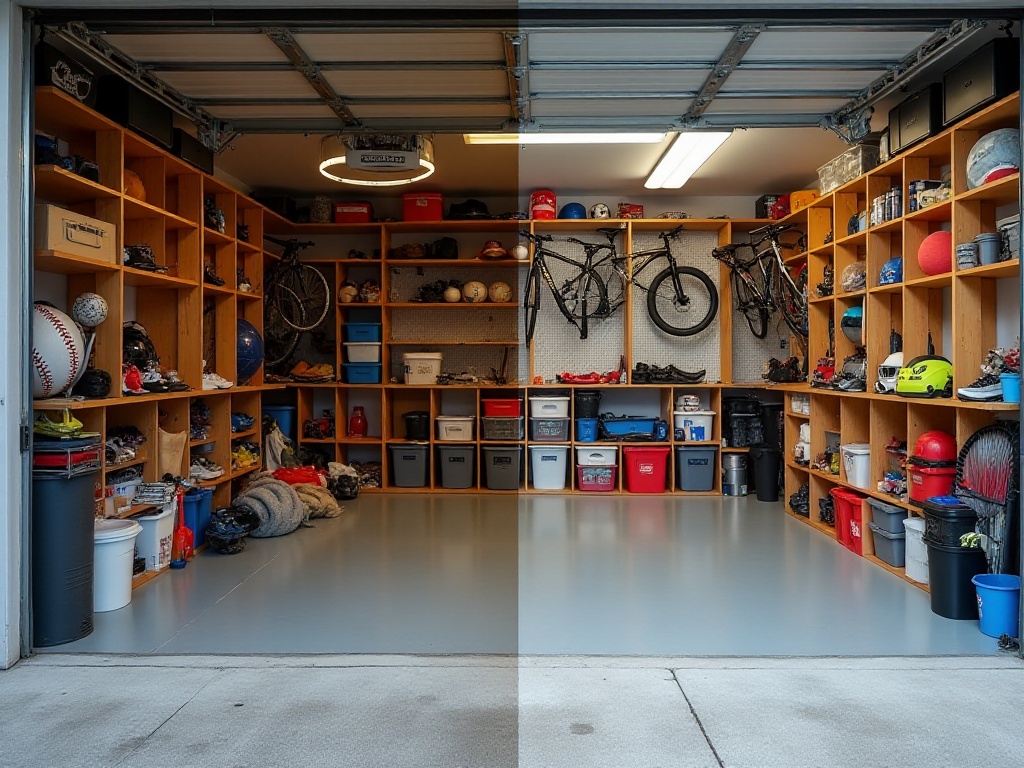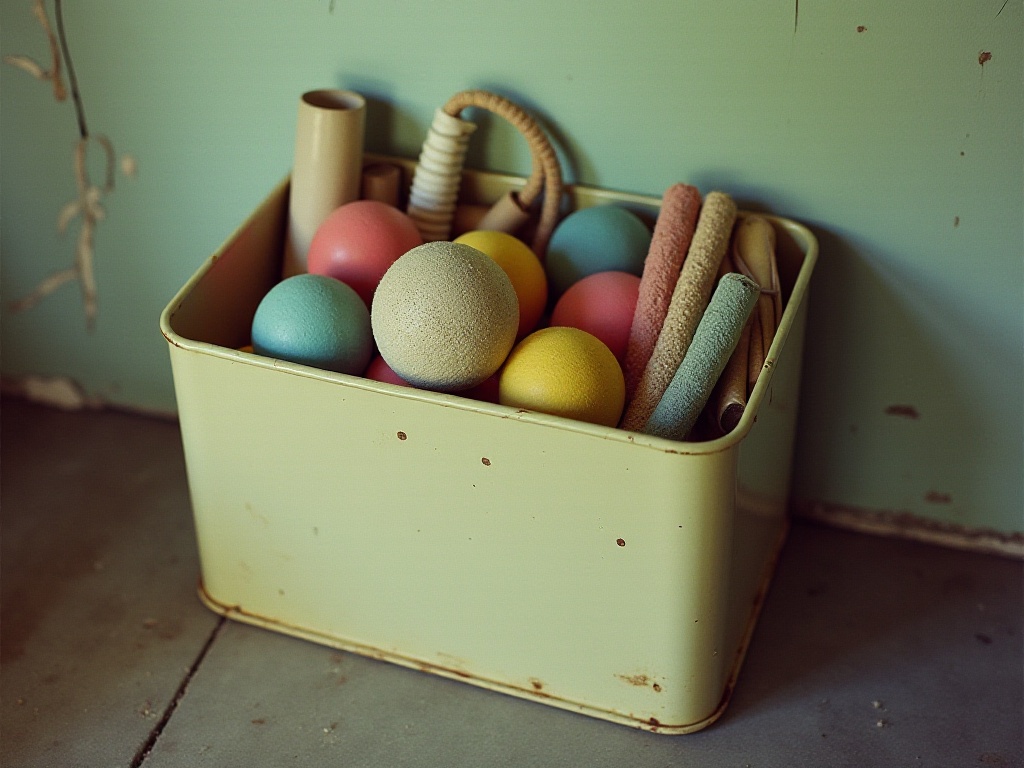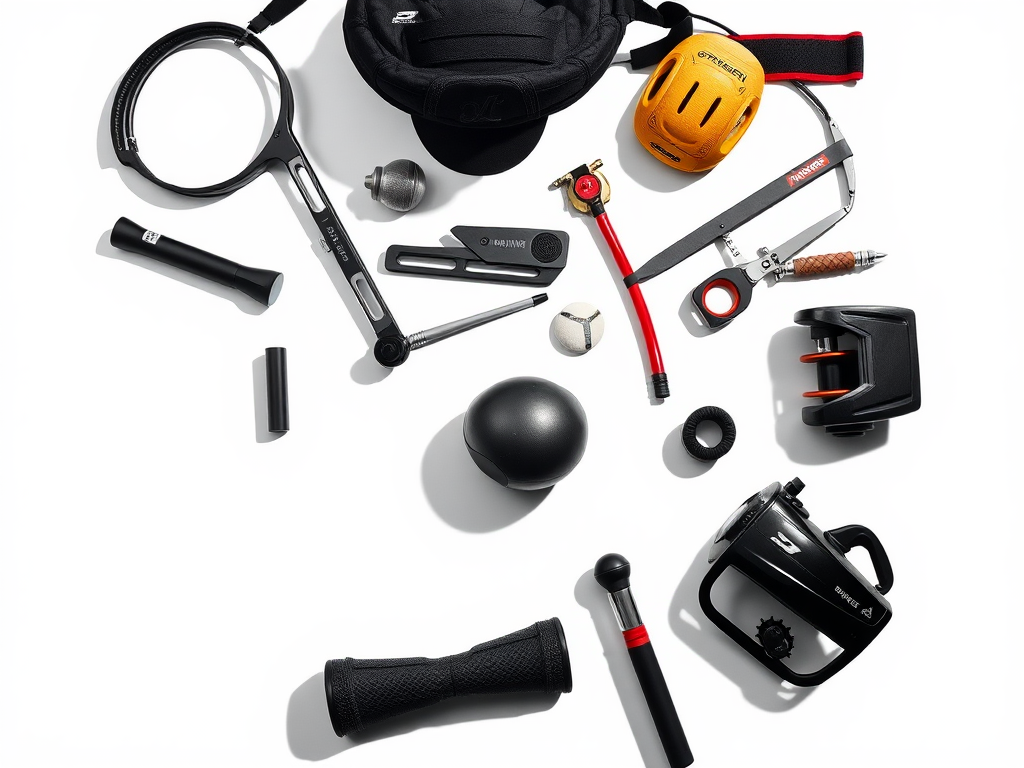Introduction
I'm a sports enthusiast who feels uneasy if I don't exercise daily. As a sports lover, various pieces of sports equipment are as vital to me as life itself. However, my home is bursting with sports equipment, with various balls, protective gear, and machines filling every corner of the rooms, making it look like a small sporting goods store.
Once, when I wanted to find a wristband for basketball, I spent over half an hour searching everywhere, only to find it lying in my tennis bag. At that moment, I was determined to properly organize all this sports equipment. After months of exploration and practice, I finally found a super practical storage method, which I'd like to share with fellow sports enthusiasts who are also troubled by equipment storage.
Basic Understanding
Before starting the storage project, we need to understand what types of sports equipment there are. Generally, sports equipment can be divided into two categories: general equipment and specialized equipment.
General equipment refers to the most common gear we use regularly. Things like basketballs, soccer balls, and badminton rackets, ranging in price from tens to hundreds of dollars. Although inexpensive, they shouldn't be stored carelessly. I have a careless friend who left a $300 basketball on the balcony, and after a month of sun exposure, the ball's surface cracked. Another time, he carelessly tossed his knee pads, causing his father to trip over them during a nighttime bathroom visit, resulting in a painful fall.
Specialized equipment refers to more professional gear, such as golf clubs, skis, and climbing equipment. These items often cost thousands of dollars and can become useless if not properly maintained. I know a golf enthusiast who spent over $10,000 on a set of top-tier clubs pursuing the perfect swing. However, due to storing them in a humid environment, the clubs started rusting within six months and had to be discarded. This kind of painful lesson is something I never want to experience again.
Speaking of this, I recall an interesting statistic. According to sports equipment industry surveys, over 60% of sports equipment damage is caused by improper storage. This number shocked me and further strengthened my determination to organize properly.
Storage Principles
To store sports equipment well, the key is to establish a scientific storage system. Space management experts have found that a well-designed storage system can save 70% of time spent searching for items and increase storage space utilization by at least 40%.
In my experience, the most effective method is zone storage. Just like how libraries categorize books, we should designate specific areas for different types of sports equipment. For example, I keep all balls in one area, all rackets in another, and protective gear in yet another separate area. The advantage of this approach is that when I need certain equipment, I can go directly to the corresponding area without searching the entire house.

Fixed Storage
When it comes to fixed storage, wall storage is absolutely king. I installed a complete storage system on my garage wall, including various hooks, shelves, and storage nets. This system cost me nearly a thousand dollars, but it's absolutely worth it. Now my basketball, soccer ball, and volleyball each have their dedicated spots, and the tennis and badminton rackets are neatly hung on the wall, looking incredibly satisfying.
Besides wall storage, drawer storage is also a good choice. I bought a five-drawer cabinet specifically for storing various small equipment. Each drawer is divided into different sections using storage boxes, with wristbands, knee pads, and elbow guards each having their own place. Most importantly, I labeled each drawer, so I won't grab the wrong item even in the middle of the night.
I've learned quite a bit about choosing storage boxes. Initially, I bought ordinary plastic storage boxes, but found they weren't sturdy enough and would deform under heavier equipment. Later, I switched to thicker storage boxes, which were more expensive but several times more durable. Plus, these storage boxes come with transparent lids, making it very convenient to see what's inside.

Portable Solutions
As someone who frequently moves around to exercise, portable storage solutions are essential. I recently found a great tool - a foldable sports equipment storage box. This storage box can be folded very thin when not in use, taking up minimal trunk space. When needed, it unfolds to reveal surprisingly large space, easily fitting my basketball, soccer ball, and various protective gear.
Besides storage boxes, I also have dedicated sports bags for each type of sport. For basketball, I use a basketball bag; for tennis, a tennis bag. Each bag permanently stores the equipment needed for that sport, eliminating the hassle of repacking every time.
Practical Tips
Through long-term practice, I've summarized many practical storage tips, which I'll share with everyone without reservation.
First is the utilization of vertical space. Many people only focus on horizontal storage, ignoring the huge potential of vertical space. Take my bicycle for example - it used to lie flat in the garage corner, not only taking up space but also frequently getting bumped by other items. Later, I installed a bicycle mount on the wall to hang the bike vertically, instantly saving a large amount of space. This storage method also prevents the bike from getting scratched, achieving multiple benefits at once.
Second is the planning of space flow. I drew out the garage floor plan and arranged positions based on how frequently each piece of equipment is used. For example, my most frequently used basketball and protective gear are placed closest to the door, while seasonal equipment like skis are stored further inside. This planning not only improves access efficiency but also makes the entire space more organized.
I also discovered a particularly useful trick: labeling each piece of equipment. This method seems simple but is extremely helpful. On the labels, I not only write the equipment name but also note the purchase date and maintenance cycle. This way, I can keep track of each item's condition and perform maintenance or replacement when needed.
Daily Maintenance
Honestly, storage is just the first step; maintenance is key to keeping things organized. I now regularly set aside half an hour each week for a thorough cleaning and organization of all equipment. Especially for protective gear that easily absorbs sweat - if not cleaned promptly, it can breed bacteria and develop unpleasant odors.
My cleaning process goes like this: first wipe off surface dust with a dry towel, then deep clean with a slightly damp towel, and finally air dry in a ventilated area. For special materials like leather basketballs, I use dedicated cleaners for maintenance to extend their lifespan.
Regarding storage environment, it's crucial to choose a well-ventilated, dry place. I made the mistake of storing some equipment in the basement before, resulting in mold due to humidity. Later, I installed a dehumidifier in the garage to maintain a dry environment, which solved this problem.

Daily Usage Suggestions
After such long exploration, I've also summarized some tips for using sports equipment. First is the frequency of use - I suggest buying equipment according to your exercise plan. I've seen many people impulsively buy lots of equipment that ends up collecting dust. Instead of buying many unused items, it's better to buy a few frequently used ones of good quality.
Second is establishing usage and storage habits. After each workout, make sure to clean the equipment and return it to its place. It might seem troublesome at first, but it becomes natural after persistence. I've now developed this habit, organizing equipment after each use, which feels quite ceremonial.
Storage Misconceptions
There are some common misconceptions about storage to avoid. The first is the hoarding mentality, always thinking something might be useful, resulting in homes filled with unused equipment. I suggest regular clearing - equipment unused for a year should be given away or disposed of.
The second misconception is over-storage. Some people buy so many storage items that the storage items themselves become things needing storage. So when purchasing storage items, be moderate and choose based on actual needs.

Summary and Reflection
Through this series of storage improvements, my sports equipment has finally achieved proper organization. Now whenever I want to exercise, I can easily grab the needed equipment without worrying about finding things. Moreover, proper storage has noticeably extended the equipment's lifespan.
But honestly, what's most important isn't these specific methods, but developing good storage habits. Just like exercise requires persistence, storage needs consistency. Returning items immediately after use and maintaining a clean environment makes exercise more enjoyable.
These are my experiences with sports equipment storage. There's no standard answer for storage; the key is finding methods that work for you. I hope my sharing provides some inspiration and helps everyone organize their sports equipment better.
Do you have any unique storage methods? Or have you encountered any difficulties in storage? Welcome to share in the comments - perhaps we can learn from each other and find better storage solutions.
Finally, I want to say that a good storage system not only makes your life more organized but also makes exercise more relaxed and enjoyable. After all, when all equipment is neatly arranged, just looking at it brings satisfaction and joy. Let's work together to create a clean and tidy sports space!







